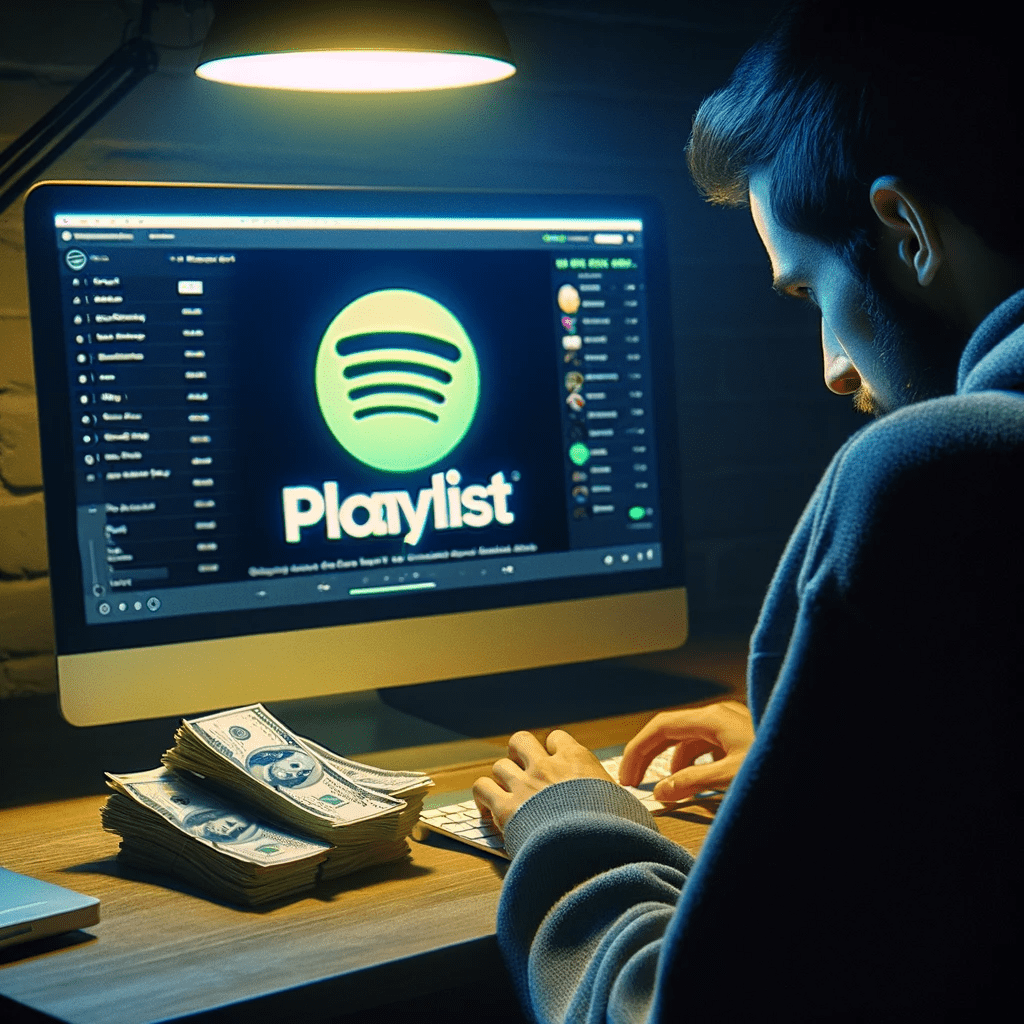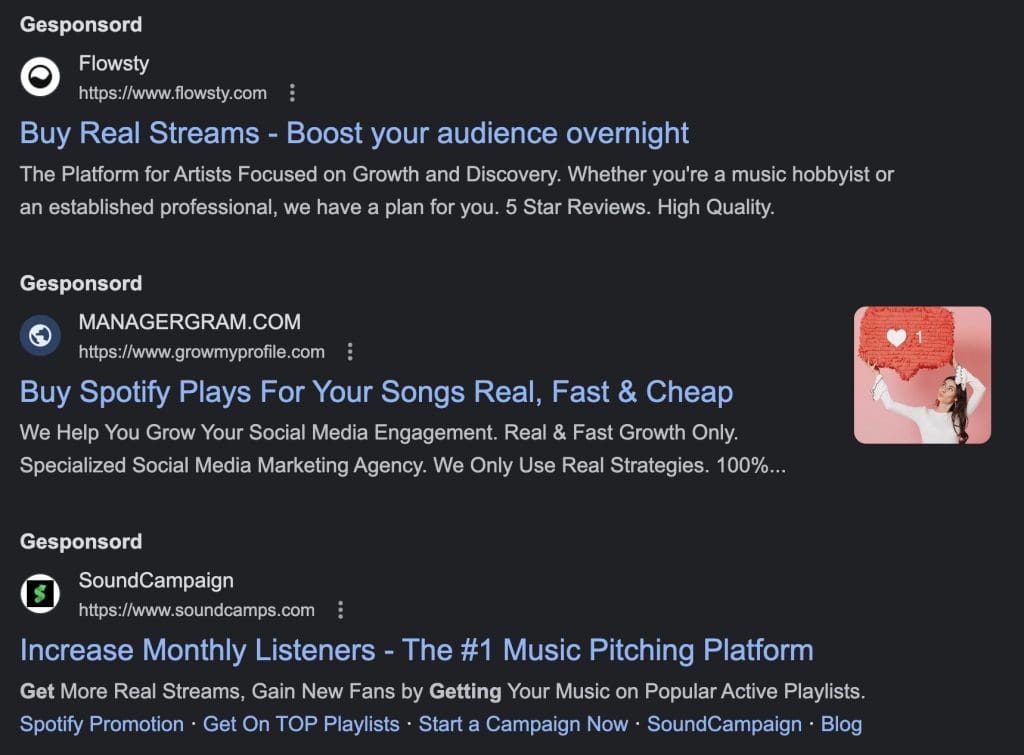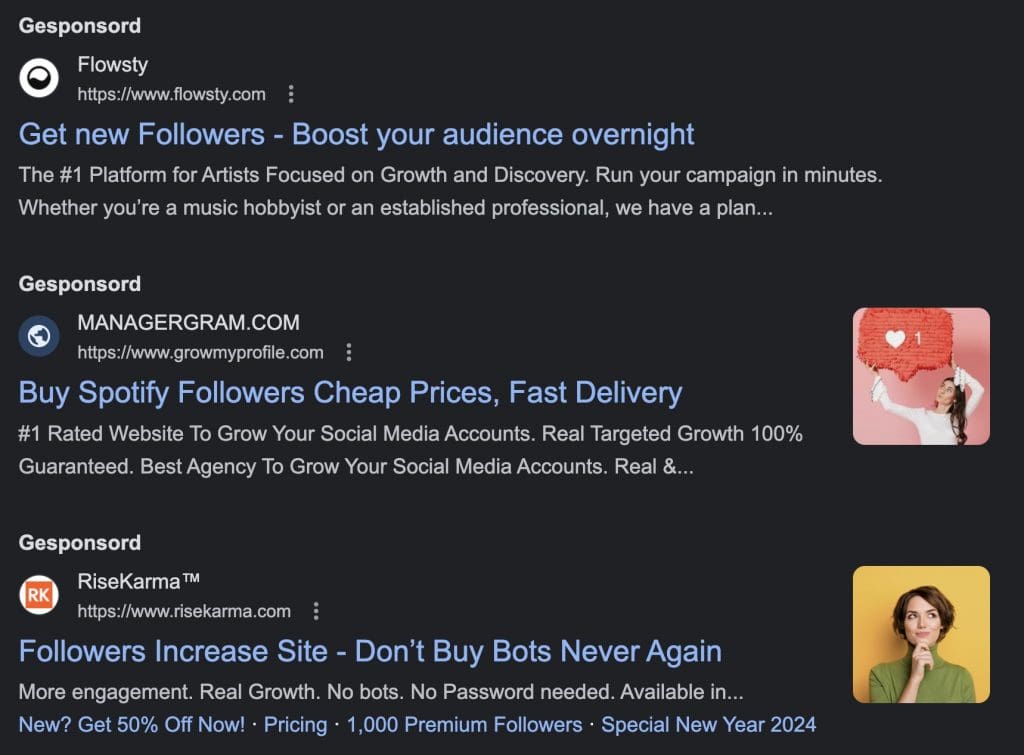Corrupt playlist curators or how to fake it big on Spotify


Corrupt playlist curators or how to fake it big on Spotify
Over the years I have seen something new amongst bands, and that is comparing streams and followers. All nice, but I have regularly seen red flags as well with artists presenting suddenly booming streaming figures, and spikes in followers growth or playlist placements. The red flags point to pay-for-follow, pay-for-play and pay-for-inclusion on playlists of corrupt playlist curators. Especially the latter starts to be a growing concern as these include sometimes some of the biggest playlists around.
Paid playlist inclusions are still hugely popular
If paid followers and streams were bad, there are also corrupt playlist curators.




Paid playlist inclusion on Spotify, especially in 2023, remains a contentious issue. Spotify’s terms of service are very strict regarding paid placement, which involves paying for a song to be placed in a playlist. This practice is not only against Spotify’s guidelines but is also considered unfair and unethical because it places songs in playlists not because of their quality, but because someone paid for their inclusion.
For artists seeking to increase their visibility on Spotify, playlist placements are crucial. Many marketing agencies now ‘facilitate’ direct communication between artists and playlist curators, allowing for more authentic interactions and potentially more effective playlist placements. These agencies might offer services like pitching songs to Spotify or YouTube playlist curators, influencers, and more, as part of a broader music promotion strategy.
Almost 7 out of 10 playlist curators we contacted do payola
However, there is a very thin line. I did a test, pitched a track to roughly 1000 playlist curators, and more than half (674 of them) immediately (within a few hours) sent a price list ranging from $49 to $280, without even checking out the track (I tracked the clicks on the link so I knew). Some also offered guaranteed plays, which is a BIG red flag of course. Only a few responded that they would possibly include the track after having listened to it.
One of the curators, based in the UK, sent me this (I checked his playlists and saw they were quite unnatural with lots of unrelated and obscure country, rap (and the odd darkwave) tracks):
- 1 playlist 28 day promotion – £30
- 2 playlists 28 day promotion – £50
- 3 playlists 28 day promotion – £70
He never had checked the track of course.
In short, the whole playlist curation world is quite sick, I would even say rotten to the core, and only goes for payola. Add to that fake streams, and you see you can not trust the figures that streaming platforms give you.
One notable case of stream manipulation involved an indie label noticing a suspicious jump in streaming numbers for one of its tracks. This track, which usually earned around 3,000 streams per day, suddenly jumped to 35,000 streams per day for three days before returning to its normal count. An investigation revealed that all the unusual plays came from six playlists on Spotify that were created recently and showed signs of stream manipulation, likely by bots.
10% of all music streams could be fake
Regarding the scale of fake streams, it’s estimated by some industry experts that as much as 10% of all music streams could be fake. This estimate includes artificially inflated streams from streaming farms, where devices continuously play certain tracks to boost their streaming counts.
The issue of fake streams is not only a technical one but also a financial concern for artists. Indie labels, in particular, have been worried about the legitimacy of their streaming numbers. It’s believed that illegitimate streams could translate to over $300 million in lost revenue, which would have otherwise gone to artists from actual listeners.
Authorities in countries like Brazil and Germany have begun to take action against fake streams. For instance, in Germany, a regional court targeted Likeservice24.de, a provider of dubious services including fake streams. Similarly, Brazilian authorities, in collaboration with an anti-piracy organization, took down several illegitimate streaming services
Game over soon for the payola strategy?
In 2023, Spotify has taken steps to address the issue of fake streams. The platform will financially penalise labels or distributors when it finds that more than 90% of streams on a song are fraudulent. This penalty will be 10 euros per offending track.The penalties will be charged against future royalties (of fake streams again you might think, which is kinda odd to be honest) and the tracks will be removed. While it aims at removing those accounts involved in money-laundering operations, a lot of bands are actually also involved in this, even in this scene where I have seen certain figures which don’t add up at all.
Spotify from its side says that it has developed methods to detect fake streams, which often come from the same few locations and exhibit patterns that appear unnatural. In France, for instance, where they already cracked down on fake plays, only 0.23% of the top 10,000 streams on Spotify showed signs of artificial streaming.
Personally I would definitely advise artists against promotions that offer a large number of streams for a small amount of money. Buying fake streams can and will lead to negative consequences such as lower rankings, loss of credibility, and even account suspension. The same goes for paid playlist placements. A lot of these services are just fake or have gathered publishers that are just in it for a quick buck. And in the end many of these playlists generate fake plays to keep the image (and their price) up.
Since you’re here …
… we have a small favour to ask. More people are reading Side-Line Magazine than ever but advertising revenues across the media are falling fast. Unlike many news organisations, we haven’t put up a paywall – we want to keep our journalism as open as we can - and we refuse to add annoying advertising. So you can see why we need to ask for your help.
Side-Line’s independent journalism takes a lot of time, money and hard work to produce. But we do it because we want to push the artists we like and who are equally fighting to survive.
If everyone who reads our reporting, who likes it, helps fund it, our future would be much more secure. For as little as 5 US$, you can support Side-Line Magazine – and it only takes a minute. Thank you.
The donations are safely powered by Paypal.









